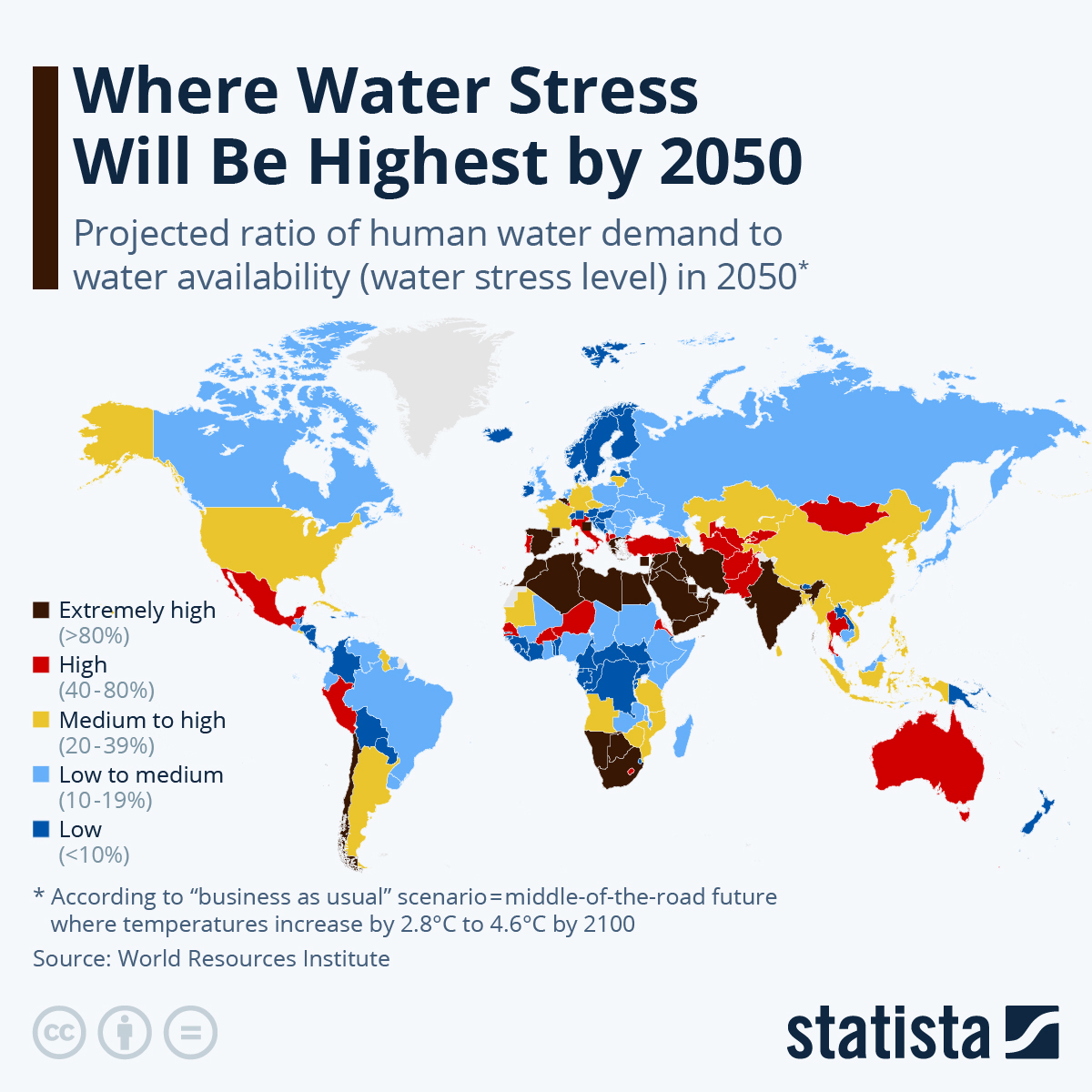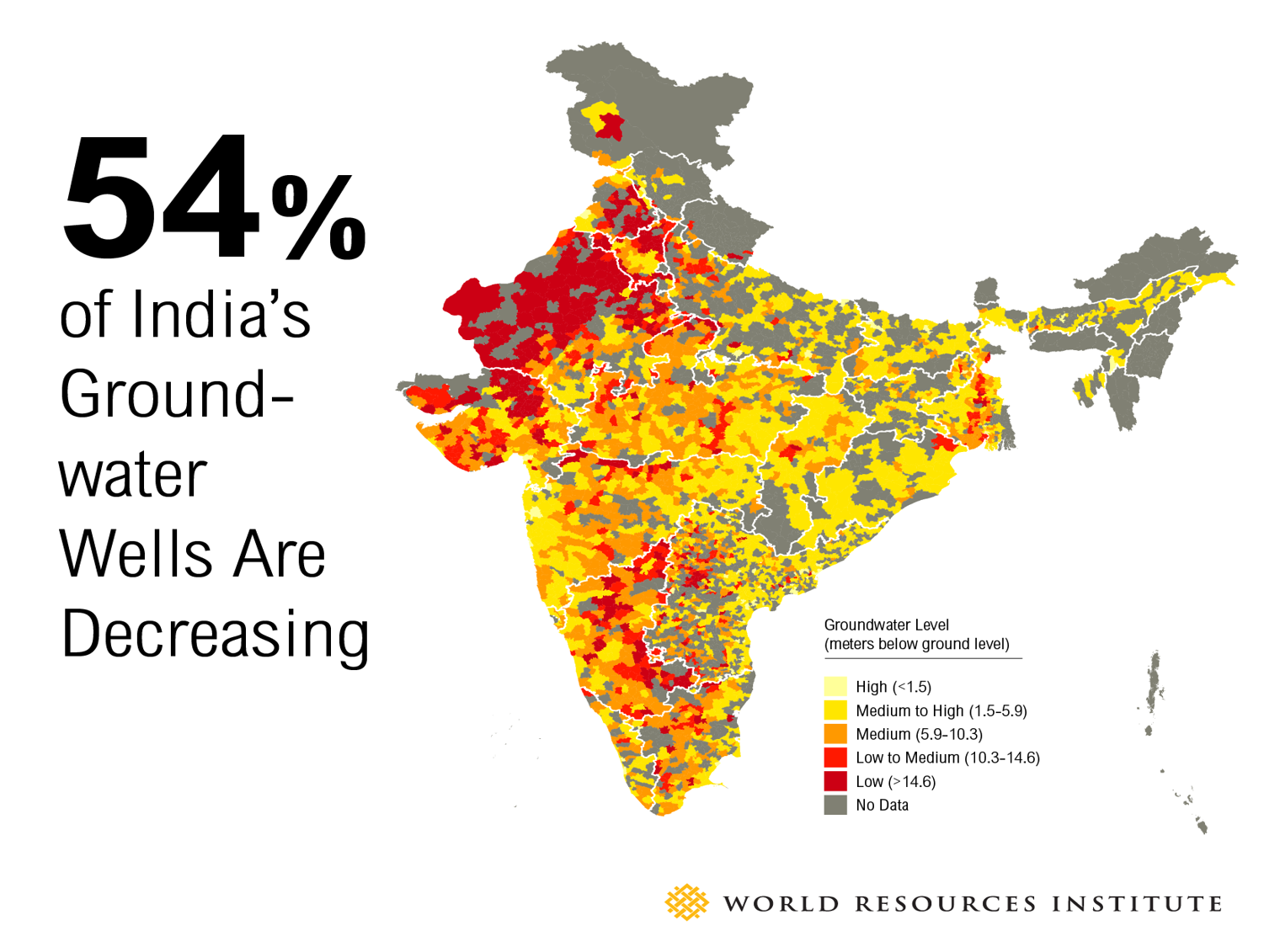-
19 Jul 2024
GS Paper 1
Geography
Day 11: Water stress is a critical issue globally and in India. Elaborate. (150 words)
Approach
- Define water stress and outline its key characteristics.
- Discuss the Global and Indian scenarios of the water crisis.
- Propose strategies to address the water crisis.
- Conclude Suitably.
Introduction
Water stress, defined as the inability to meet human and ecological water demand, is a critical issue affecting numerous regions globally and in India. It is characterized by declining water availability, poor water quality, and challenges in accessing safe and affordable water.
Body
The Severity of the Water Crisis
Global Scenario :
- Scarcity: Over 2 billion people live in countries experiencing high water stress, with regions such as the Middle East, North Africa, and parts of South Asia facing extreme water scarcity.
- Pollution: Contaminated water sources affect about 2.2 billion people globally, leading to health problems and reducing the availability of clean drinking water.
- Globally Most Affected Regions:
- Middle East and North Africa (MENA): The MENA region is one of the most water-scarce areas globally, relying heavily on desalination.
- Sub-Saharan Africa: Many countries face severe water shortages and lack infrastructure for water storage and distribution.
- Asia: Rapid economic growth and population increase have strained water resources, particularly in China and India.
Indian Scenario:
- Widespread Stress: A report titled “Composite Water Management Index (CWMI)”, published by NITI Aayog in June 2018, mentioned that India was undergoing the worst water crisis in its history; that nearly 600 million people were facing high to extreme water stress; and about 200,000 people were dying every year due to inadequate access to safe water.
- Pollution: Water bodies in India are heavily polluted due to industrial discharges, agricultural runoff, and inadequate waste management, affecting both surface and groundwater quality.
- The NITI Aayog report mentioned that India was placed at the rank of 120 amongst 122 countries in the water quality index, with nearly 70% of water being contaminated.
- Groundwater Depletion: Excessive extraction for agricultural and domestic use has led to declining groundwater levels, with many states facing critical water shortages.
- India is the largest groundwater user in the world, with an estimated usage of around 251 bcm per year, more than a quarter of the global total.
- Regional Water Stress
- Northern India: The states of Punjab, Haryana, and Uttar Pradesh face acute groundwater depletion due to over-extraction for agriculture.
- Western India: Rajasthan and Gujarat experience chronic water scarcity due to low rainfall and high evapotranspiration rates.
- Southern India: Karnataka, Tamil Nadu, and Andhra Pradesh often face water conflicts due to inter-state river disputes and varying rainfall patterns.
Factors Contributing to Water Stress
- Population Growth: The global population is projected to reach 9.7 billion by 2050, increasing the demand for water.With a population exceeding 1.4 billion, India's water resources are under immense pressure.
- Climate Change: Altered precipitation patterns, increased frequency of droughts, and melting glaciers affect water availability.Irregular monsoons, melting Himalayan glaciers, and frequent droughts affect water availability in India
- Urbanization and Industrialization: Rapid urban growth and industrial activities exacerbate water pollution and increase water demand.
- Agricultural Demands: Agriculture accounts for about 70% of global freshwater use, often leading to over-extraction of water resources.
Impacts of Water Stress
- Health Implications
- Waterborne Diseases: Contaminated water sources lead to diseases such as cholera, dysentery, and typhoid.
- Malnutrition: Water scarcity affects food production, leading to nutritional deficiencies.
- Economic Consequences
- Agricultural Productivity: Reduced water availability impacts crop yields, affecting food security and farmer incomes.
- Industrial Growth: Water-dependent industries, including textiles and beverages, face operational challenges.
- Social and Political Ramifications
- Water Conflicts: Disputes over water resources occur both within and between countries, such as the Cauvery River dispute between Karnataka and Tamil Nadu.
- Migration: Water scarcity can lead to internal displacement and migration, contributing to urban overcrowding.
Strategies to Mitigate Water Stress
- Efficient Water Management
- Drip Irrigation: Promoting efficient irrigation techniques to reduce water wastage in agriculture.
- As per the MS Swaminathan committee report on ‘More Crop and Income Per Drop of Water’ (2006), drip and sprinkler irrigation can save around 50% of water in crop cultivation and increase the yield of crops by 40-60%.
- Rainwater Harvesting: Encouraging rainwater collection to augment water supply, especially in urban areas.
- Drip Irrigation: Promoting efficient irrigation techniques to reduce water wastage in agriculture.
- Policy and Governance
- Integrated Water Resources Management (IWRM): Implementing policies that promote sustainable water use and management across sectors.
- Water Pricing: Introducing pricing mechanisms to incentivize conservation and efficient use of water.
- Technological Innovations
- Desalination: Developing and deploying desalination plants to provide freshwater in coastal regions.
- Wastewater Treatment: Investing in technologies to treat and recycle wastewater for industrial and agricultural use.
Conclusion
Water stress is a multifaceted issue that requires coordinated global and local efforts. In India, addressing water stress involves a combination of technological, policy, and community-based approaches to ensure sustainable water management. Ensuring water security is vital for health, economic stability, and social harmony, necessitating urgent and sustained action.






